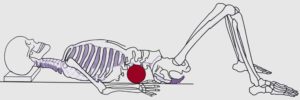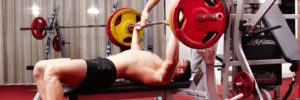
3 Ways to Know If You Should Progress or Regress Weight on an Exercise
Over the past few years of coaching a wide variety of people, I’ve found that verbal responses to a question such as “how’d that weight feel?” provides a good indication if you need to progress, regress or stay the same in weight.
For instance, the other day I had a new client with a history of back issues perform goblet squats. Note: This client hadn’t done any vigorous lower body training in over 10 years. The one exception was with me the week prior. While performing 4 sets of 8 for goblet squats, I started the client with 20lbs, which was the weight we used the week prior.
After the set, I asked the client:
“How’d that weight feel?”
He said. “It’s light.”
I responded. “Okay.” And increased the weight to 25lbs.
After his 2nd set, I asked him again:
“How’d that weight feel?”
He responded. “It’s very light.”
I said. “Okay.” And for the 3rd set, I increased the weight to 35lbs.
After his 3rd set. I asked again:
“How’d that weight feel?”
He responded. “Good.”
BOOM.
We found the proper weight. And I kept the client at 35lbs for their 4th set.
From a technical standpoint, his form was great, and he was working hard with 35lbs.
We may have been able to increase the weight to 40lbs, but for a client with back issues that is starting his 2nd lower body workout in over 10 years, it’s not a person I want to rush. I’d rather get him comfortable squatting with a weight that he feels a moderate challenge with before progressing.
When to Know if You Should Progress in Weight
Verbal Responses: Communicating with your clients is critical. If you don’t ask simple questions such as “How’d that weight feel?” then how do you know if you’re challenging your clients or not? The weight may be too light for them or too heavy, but you didn’t ask. And, therefore, they may not get the training effect you intend for them. A client’s verbal response to a working set gives you a good indication if the weight needs adjusting or not.
Here are 4 responses I hear to the question “How’d that weight feel?” and what it translates too:
“The weights not bad” translates to I could go a bit heavier.
“The weight is light” translates to I should go heavier.
“The weight feels good” translates to the perfect weight.
“The weight is heavy” translates to I should perhaps go lighter.
“The weight is very heavy” translates to I should go lighter.
Whatever the response is, take it into consideration with the factors below and adjust if need be.
Technique: If a client’s technique is off and they can’t perform the assigned rep range for the set without compensating (e.g., lumbar extension, forward head posture), then they need to regress.
The technique should never be sacrificed to finish a working set.
I’d rather have a client perform cluster sets or reduce the repetitions if they fail to achieve the assigned rep-range with good technique; however, if a client can perform multiple working sets with good technique, then they could perhaps increase their weight.
Appearance: If a client walks into the gym yawning, spaced out, or is perhaps taking longer rest breaks between sets, then this is an indication that their weights may need to be regressed.
Perhaps the client had a long day at work, didn’t get quality sleep the night before, or is going through relationship troubles; each of these factors into performance for the workout. If a client comes into the gym full of energy, jumping around, very engaging – then it’s perhaps a good indication they’ll be ready to work!
Conclusion
When it comes to progressing or regressing weights, you need to listen to your clients, monitor their technique and observe their actions in the gym. Your clients are going to give you clues on how you should coach them for their session. Sure, you might have a plan in place, but a plan rarely goes the way it’s written out. You should always be ready to change and adapt when your clients come to see you. A good coach is an adaptable coach.
Salute,
Remi
Thumbnail Image Licensed from “NatashaFedorova/depositphotos.com”












